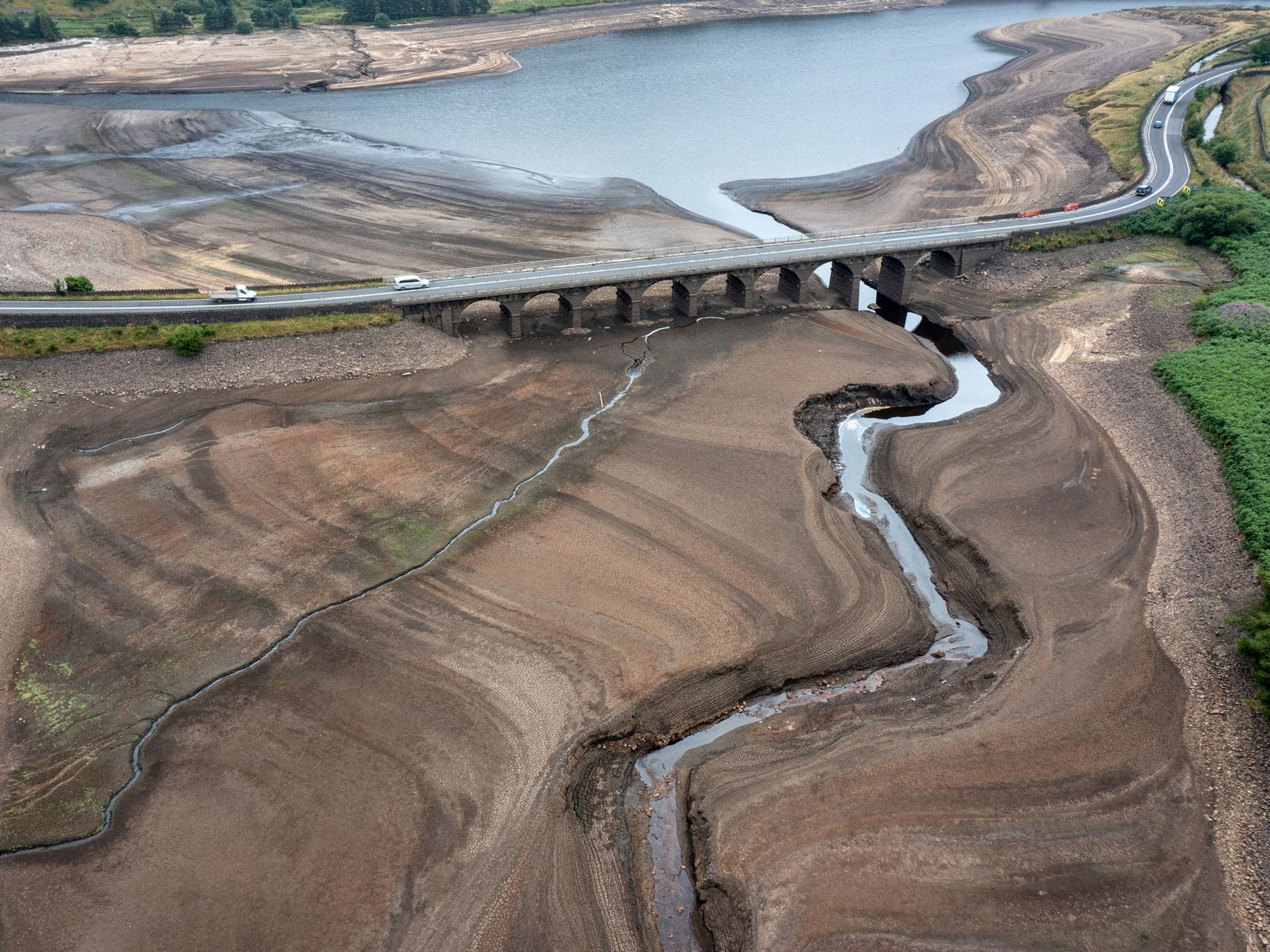
Why snowpack is so critical to life in the West
Millions of people in the U.S. rely on the melting of snow for drinking water, agriculture, and more. But even amid near-record snows in California, snowpack levels are steadily declining.
As California digs itself out from staggering accumulations of snowfall, there has been a pressing question in the minds of many: Could the near-record levels of snow be enough to fill the state’s reservoirs and break the drought that has long strangled the region?
That depends on something called snowpack, which is essential to refilling the state’s reservoirs. And, indeed, snowpack in the Sierra Nevada mountains is creeping toward record levels, Karla Nemeth, director of the California Department of Water Resources, said in a statement. But, she added, “it will also take more than one good year to begin recovery.”
(The drought in the western U.S. could last until 2030. Here's why.)
So what exactly is snowpack, and why do the millions of people who live in the West depend on it? Here’s what you need to know.

What is snowpack?
Snowpack is just what it sounds like: Layers of snow that are packed together on the ground. This occurs when snow falls in mountainous areas with below-freezing temperatures, allowing it to accumulate on the ground and stick around for months at a time. With each fresh dusting of powder, it becomes deeper and more compact.
When temperatures begin to rise, the snowpack begins to slowly melt—steadily filling surrounding rivers, reservoirs, and groundwater aquifers throughout the spring and summer months. This water that was stored within the snowpack is called snowmelt.
Temperature and wind play a role in how deep snowpack can get: Strong winds can erode the top layers while higher temperatures can cause it to melt too early in the season. (More on that in a bit.)

Why is it important?
States in the West rely on snowpack to get them through the hot and dry season that’s only getting hotter and drier with climate change. The Sierra snowpack, for example, supplies about a third of California’s water, while the Rockies are essential water sources for states such as Arizona and New Mexico.
And it doesn’t just impact drinking water. These states also depend on snowpack for hydropower and irrigation to grow fruits, nuts, and other produce.
(How dusty snow is making the western drought worse.)
Nature also depends on snowpack, according to the Yale School of the Environment. Wolverines, for example, build their dens high in the mountains where the snowpack is too dense for predators to follow. Snow cover provides insulation for tree root systems to protect them from freezing above-ground temperatures, and it offers camouflage for animals with white coats. Changes to the timing or abundance of snowmelt can also disrupt fish spawning.
Finally, humans also rely on it for recreation. Avid skiers and snowboarders often keep track of how much snowpack has accumulated on their favorite slopes because deeper snowpack can prolong skiing season—while particularly shallow snowpack can create avalanche conditions.


Climate change and snowpack
Despite occasionally epic snow seasons, climate change is driving a decline in snowpack in the U.S. From 1955 to 2022, snowpack declined by about 23 percent, according to the U.S. Environmental Protection Agency. Those declines are particularly prominent in Washington State, Oregon, Northern California, and the northern Rockies.
Warming temperatures in the winter and spring are also causing the snow to melt earlier than it did in the past. The EPA notes that the length of “snowpack season,” as it’s called, has decreased by 18 days on average. This shift means that the runoff from the snowmelt doesn’t last for as long into the summer as it once did—leaving the reservoirs to dry up again.
(The science connecting wildfires to climate change.)
Beyond drought, this has other implications for the West. Studies show that earlier snowmelt leads to more wildfires and longer wildfire seasons. As Nat Geo has previously reported, that’s because it gives plants and soil more time to dry out—making them more susceptible to burning.
Related Topics
You May Also Like
Go Further
Animals
- These are the weird reasons octopuses change shape and colorThese are the weird reasons octopuses change shape and color
- Why young scientists want you to care about 'scary' speciesWhy young scientists want you to care about 'scary' species
- What rising temperatures in the Gulf of Maine mean for wildlifeWhat rising temperatures in the Gulf of Maine mean for wildlife
- He’s called ‘omacha,’ a dolphin that transforms into a man. Why?He’s called ‘omacha,’ a dolphin that transforms into a man. Why?
- Behind the scenes at America’s biggest birding festivalBehind the scenes at America’s biggest birding festival
Environment
- What rising temperatures in the Gulf of Maine mean for wildlifeWhat rising temperatures in the Gulf of Maine mean for wildlife
- He’s called ‘omacha,’ a dolphin that transforms into a man. Why?He’s called ‘omacha,’ a dolphin that transforms into a man. Why?
- The northernmost flower living at the top of the worldThe northernmost flower living at the top of the world
- This beautiful floating flower is wreaking havoc on NigeriaThis beautiful floating flower is wreaking havoc on Nigeria
- What the Aral Sea might teach us about life after disasterWhat the Aral Sea might teach us about life after disaster
History & Culture
- Scientists find evidence of ancient waterway beside Egypt’s pyramidsScientists find evidence of ancient waterway beside Egypt’s pyramids
- This thriving society vanished into thin air. What happened?This thriving society vanished into thin air. What happened?
Science
- Extreme heat can be deadly – here’s how to know if you’re at riskExtreme heat can be deadly – here’s how to know if you’re at risk
- Why dopamine drives you to do hard things—even without a rewardWhy dopamine drives you to do hard things—even without a reward
- What will astronauts use to drive across the Moon?What will astronauts use to drive across the Moon?
- Oral contraceptives may help lower the risk of sports injuriesOral contraceptives may help lower the risk of sports injuries
- How stressed are you? Answer these 10 questions to find out.
- Science
How stressed are you? Answer these 10 questions to find out. - Does meditation actually work? Here’s what the science says.Does meditation actually work? Here’s what the science says.
Travel
- Going on a cruise? Here’s how to stay healthy onboardGoing on a cruise? Here’s how to stay healthy onboard
- What to see and do in Werfen, Austria's iconic destinationWhat to see and do in Werfen, Austria's iconic destination
- How to get front-row seats to an active volcano in GuatemalaHow to get front-row seats to an active volcano in Guatemala
- Urban wine is making a comeback in Paris. Here's how to try itUrban wine is making a comeback in Paris. Here's how to try it




